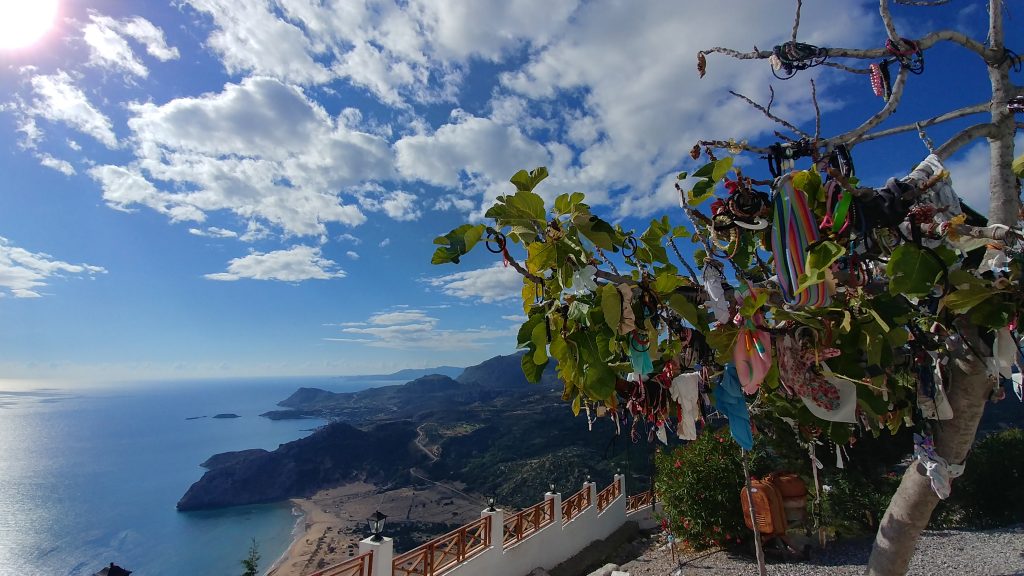Tsambika Monastery: Leave your baby dolls and leave the rest to faith
Greece. A mythical country where the honey-scented sea breeze will enchant you, warm, silk-like waters will entice you, and white-washed homes that grace the countryside will charm you. Locals greet you with warm smiles, and culinary experiences tickle your taste buds. Millions flock to Athens, Mykonos, and Santorini every year to experience breathtaking beauty and unforgettable sunsets. But there’s another island where others gladly and willingly yearn to visit not only for fun in the sun, but also to put their stamina and even their faith to the test.
That island is Rhodes. Considered to be the capital of the Dodecanese Island group in southeastern Greece, Rhodes was once home to the Colossus of Rhodes – one of the seven wonders of the ancient world.
The island has been at the crossroads of history and trade routes for millennia, the Palace of the Grand Master of the Knights of Rhodes dominating its skyline. Exploring and meandering through the castle of preserved Medieval, Ottoman, and Byzantine architecture very much looks and feels like taking a walk through a living museum. All visitors to Rhodes spend most of their time in the castle and have an itinerary that includes other major points of interest. But there’s another group of travellers who are willingly eager to go off-the-beaten-path and visit one specific place located on a mountaintop. In fact, they’ve done it for decades!
That place is the Tsambika Monastery, a small Byzantine church dedicated to the Virgin.
Located on the east coast of the island, just north of the village of Archangelos, the Tsambika Monastery is another one of those picturesque and iconic cliff-top monasteries in Greece that lures you with a challenging hike and rewards you with grand vistas. Hiking to them is a task that tests strength, willpower, and faith. But a hike to this particular monastery is considered to be more of a pilgrimage because prayers here seem to offer one more incentive – it’s believed that those who’ve had difficulty conceiving a child in the past come here as a last-ditch effort to have their prayers for a baby answered.
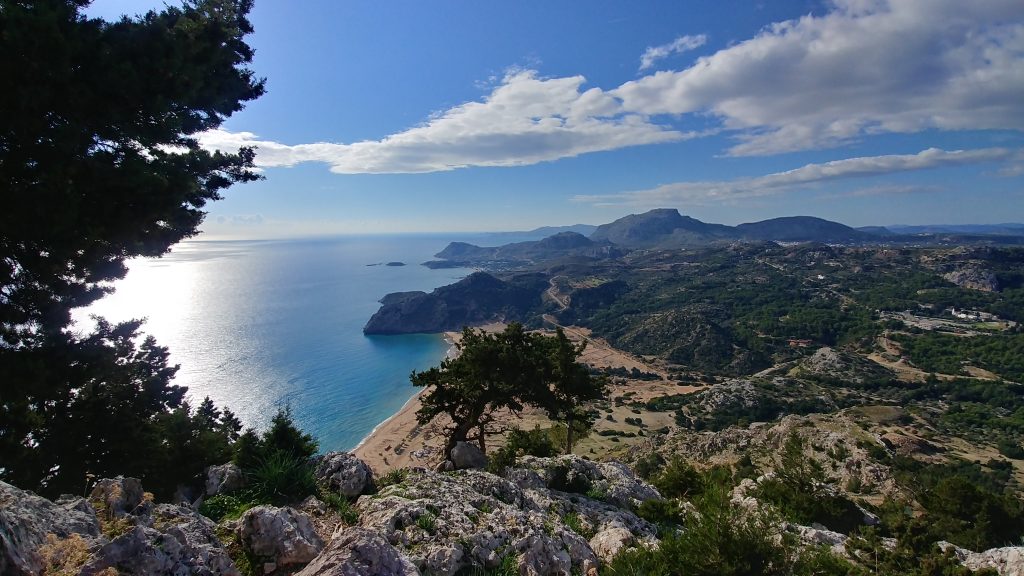
Here’s a bit of background and where the story originates.
The icon of the Virgin Tsambika miraculously made its way from Cyprus to a mountaintop in Rhodes. A shepherd noticed a light coming from the mountain and ventured to see what it was. He discovered that the light was coming from the icon which happened to be on a cypress tree. Villagers repeatedly attempted to carry the icon to the village but somehow, the icon itself always returned to the spot where it was discovered. It was determined that the will of the Virgin was to have a church built on that spot.
Years later, during the Ottoman occupation of Rhodes, the most famous miracle associated with the Tsambika Monastery involved the wife of a Turkish Pasha, who knew that she couldn’t bear children, prayed anyway, and ate the wick that burned the fire of the lamp that stood before the holy icon. Months later, to her disbelief, she bore a child and when the baby was born, it held in its grasp the wick the mother had eaten.
The legend grew and word began to spread. These days, women who have had trouble conceiving don’t have to eat the wick but if they want to have a chance at conceiving, it’s believed that they must climb the hill barefoot, and pray to the Virgin for fertility. It’s a safe bet that those climbing the more than 350 steps up the steep mountain to reach it don’t mind sweating it out all for the chance of a baby while putting their faith on the line.
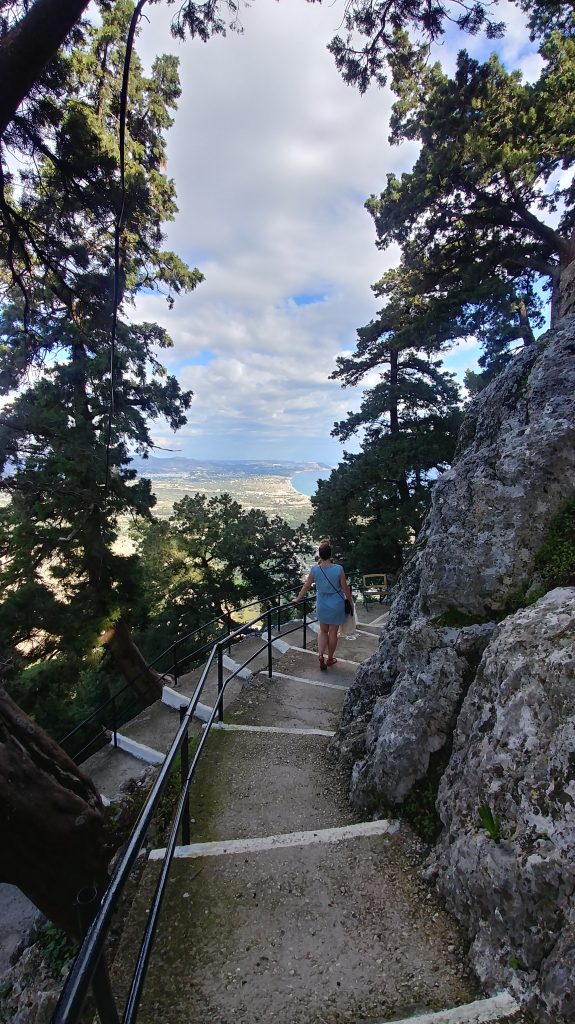
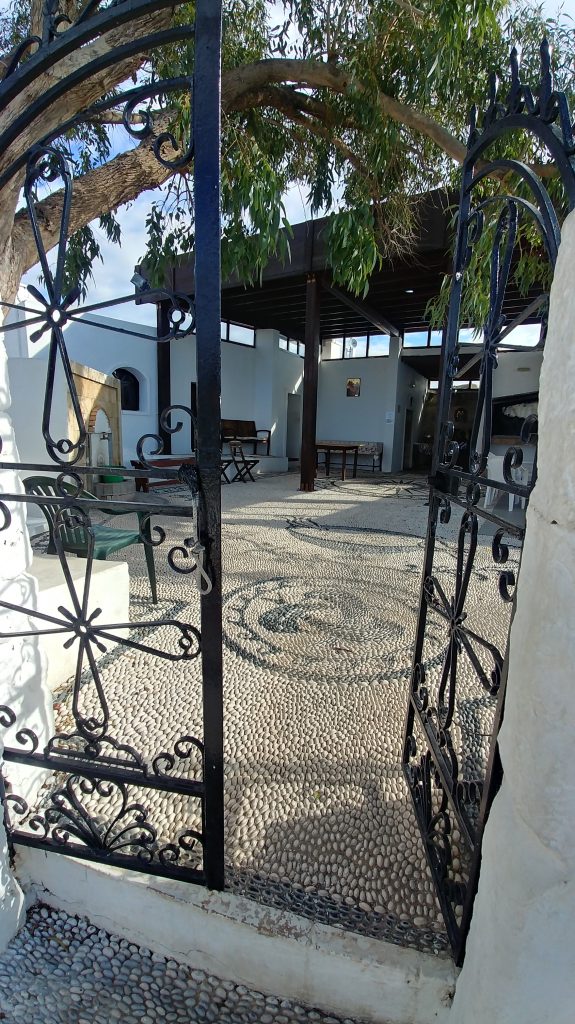
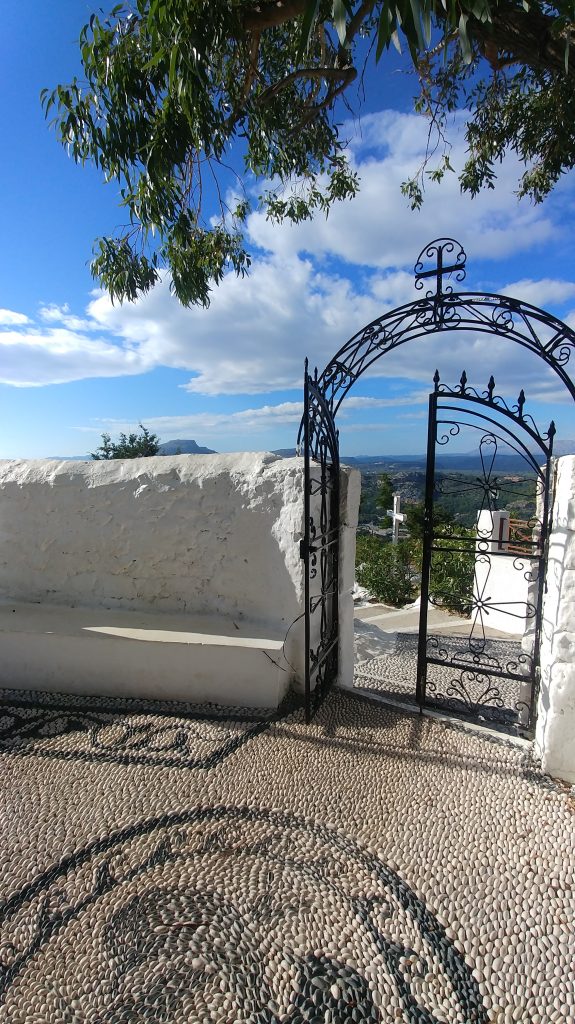
Upon entering the Tsambika Monastery, one immediately notices dozens of wax and rubber baby dolls, trinkets, bracelets, and even baby clothing placed perfectly at both the entranceway and below each of the icons of the sacred patron Saints inside. These items have become symbols of their desire to conceive a child and leaving them within the monastery, along with a prayer written on paper, represents a clear ‘ask and ye shall receive’ hope that the ask will come to fruition. Yes, for generations of visitors from around the world, this monastery is believed to answer conception prayers. And for those who have had their prayers answered, a return visit is an essential next step.
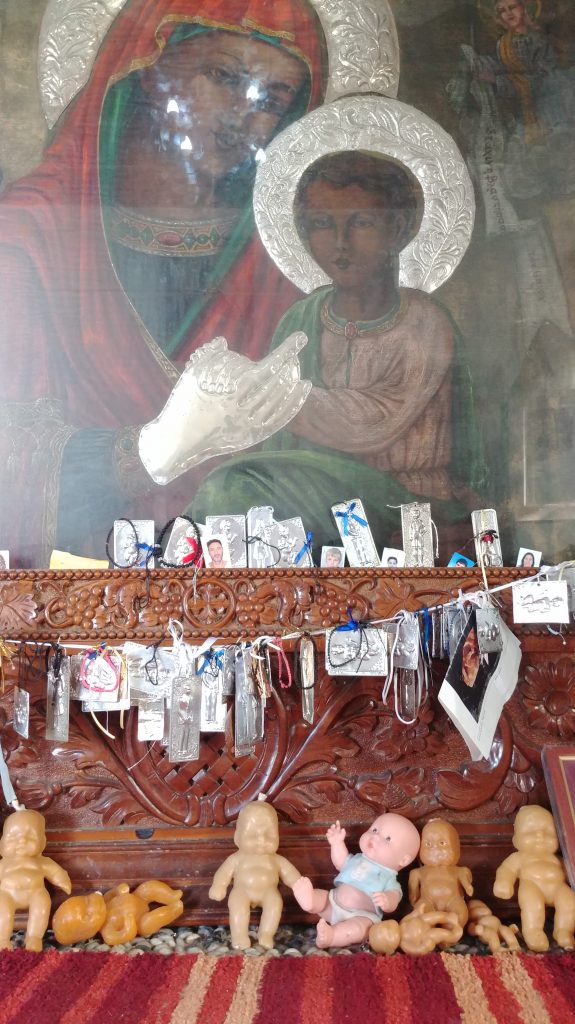
To thank the Virgin for the blessing they’ve received, families often return to Tsambika Monastery years later, replacing the baby dolls they placed inside with pictures of their newborns and even attaching various pieces of baby clothing to the pictures. The motivation behind it is to instill faith in the next generation of families who want to conceive, demonstrating that with sincere faith and positive energy, their prayers may also be answered, and their faith may also be compensated.
So if you’re having trouble conceiving, yearning to have a child, and hoping for divine intervention along your journey, a trip to the Tsambika Monastery in Rhodes, Greece may be in your cards. Just remember, if you have a boy, it’s advised that you name it ‘Tsambiko’. If you have a girl, ’Tsambika’. In fact to this day, those names are synonymous with Rhodes and this monastery so if you ever meet someone with either of those names, you’ll not only know the meaning behind them but the power of faith it took to conceive them.

Book Your Stay Now Near Tsambika Monastery, Greece
Use the interactive map below to search, compare and book hotels & rentals at the best prices that are sourced from a variety of platforms including Booking.com, Hotels.com, Expedia, Vrbo, and more. You can move the map to search for accommodations in other areas and also use the filter to find restaurants, purchase tickets for tours and attractions, and locate interesting points of interest!

Jim Bamboulis knew that experiences were far more meaningful than selfies when he started his media career 20 years ago. Jim spent 15 years as a TV Producer, Director, Writer and Host before starting TravelMammal, a site dedicated to creating content that showcases the things, places and people behind the most unique, engaging and delicious travel, food and cultural experiences worldwide. Jim also hosts two Greektown Food Tours in Toronto and has since pivoted to offer five Greek Food Care Packages that are shipped worldwide. Jim’s aim is to constantly and consistently create content and experiences that unite the global community.
